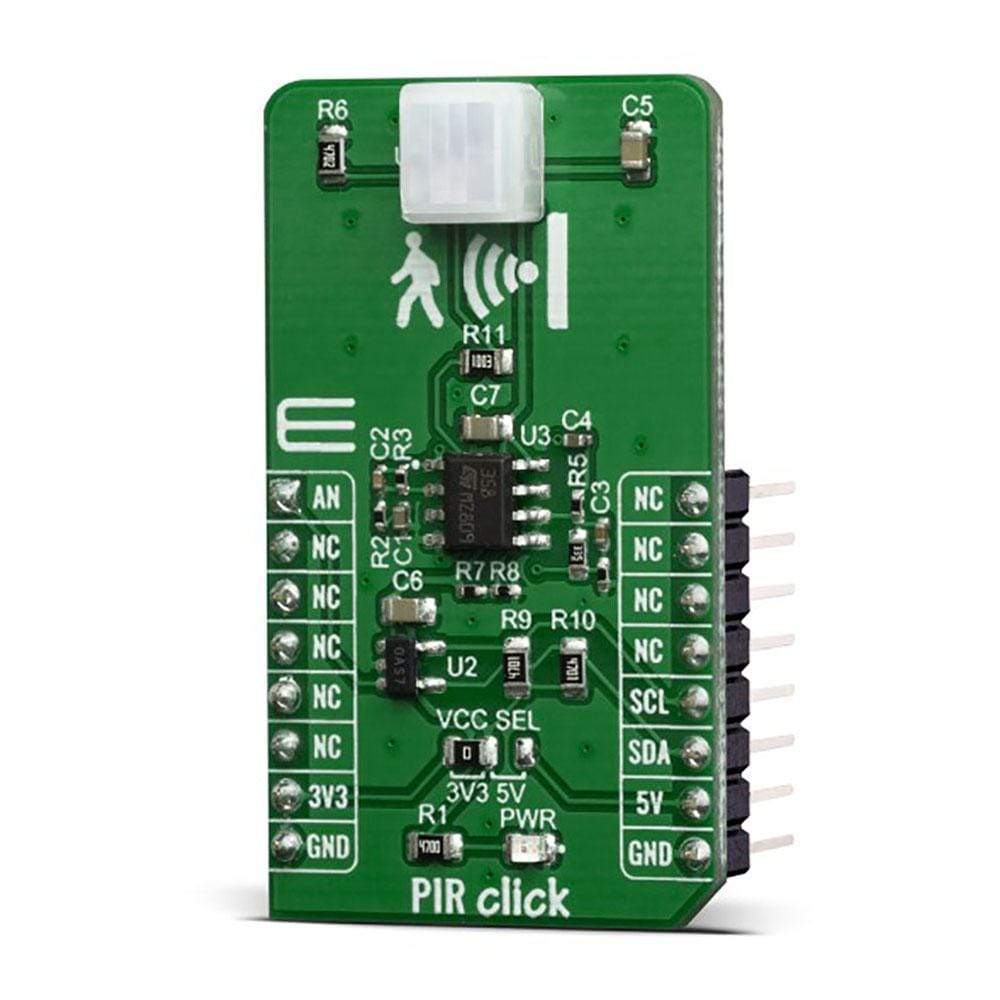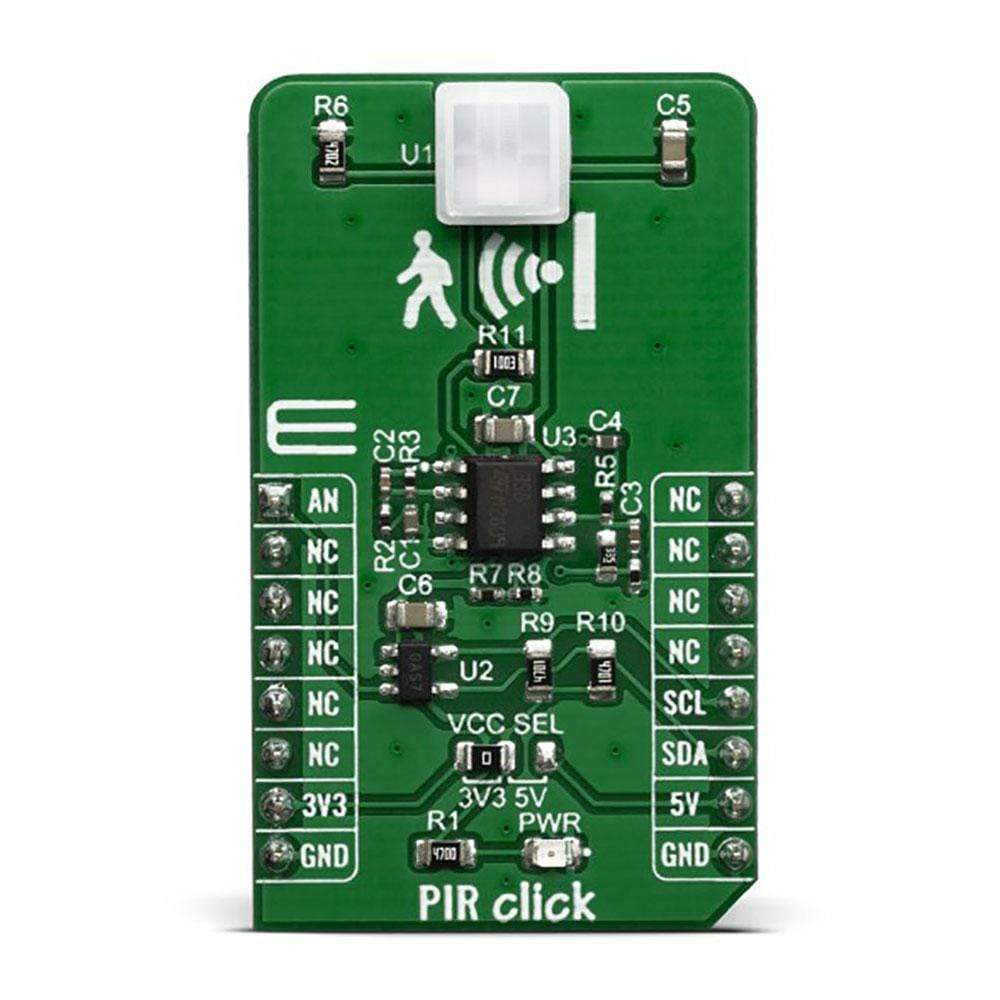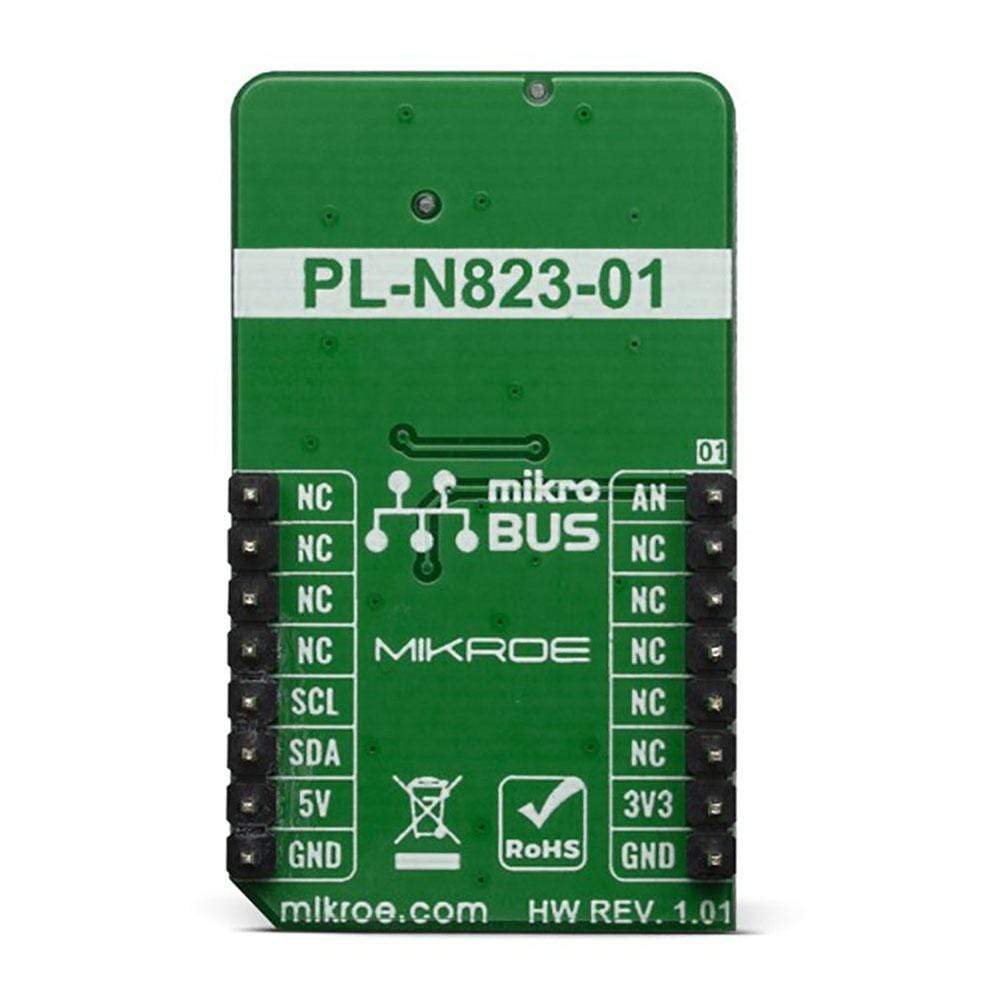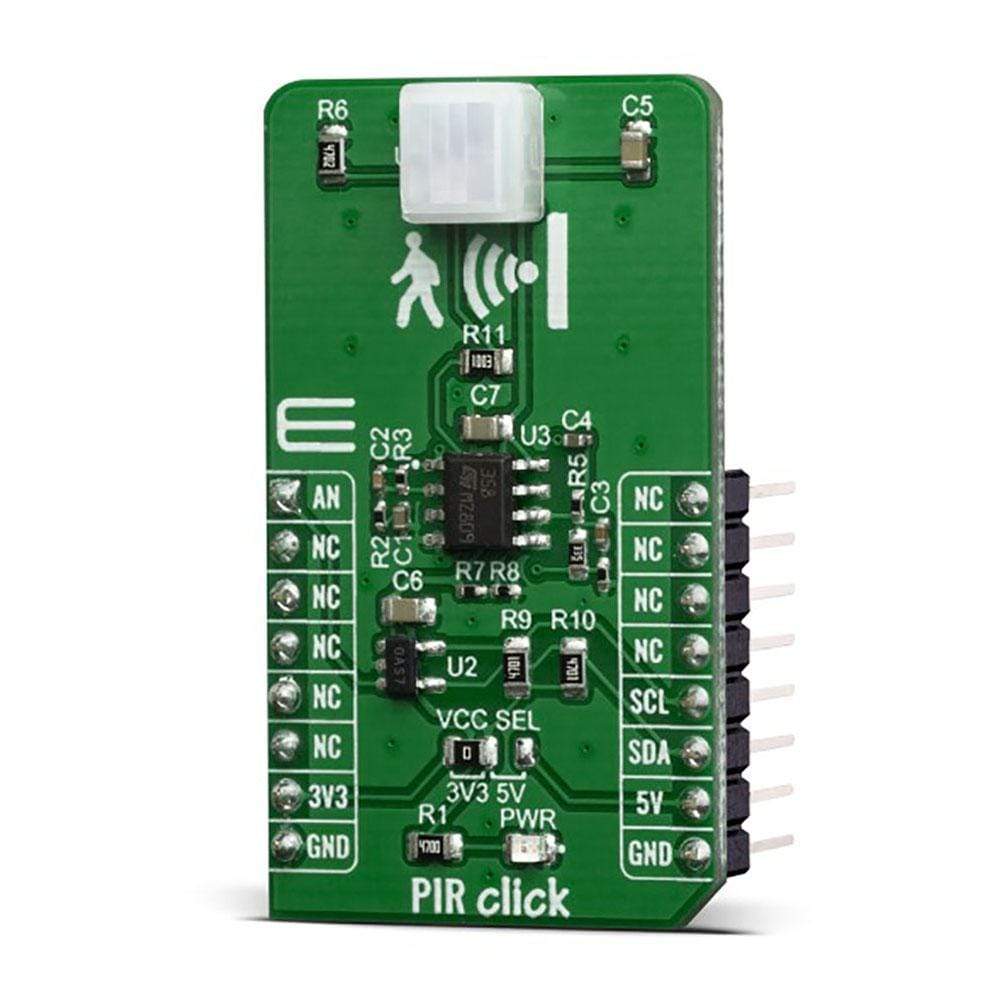
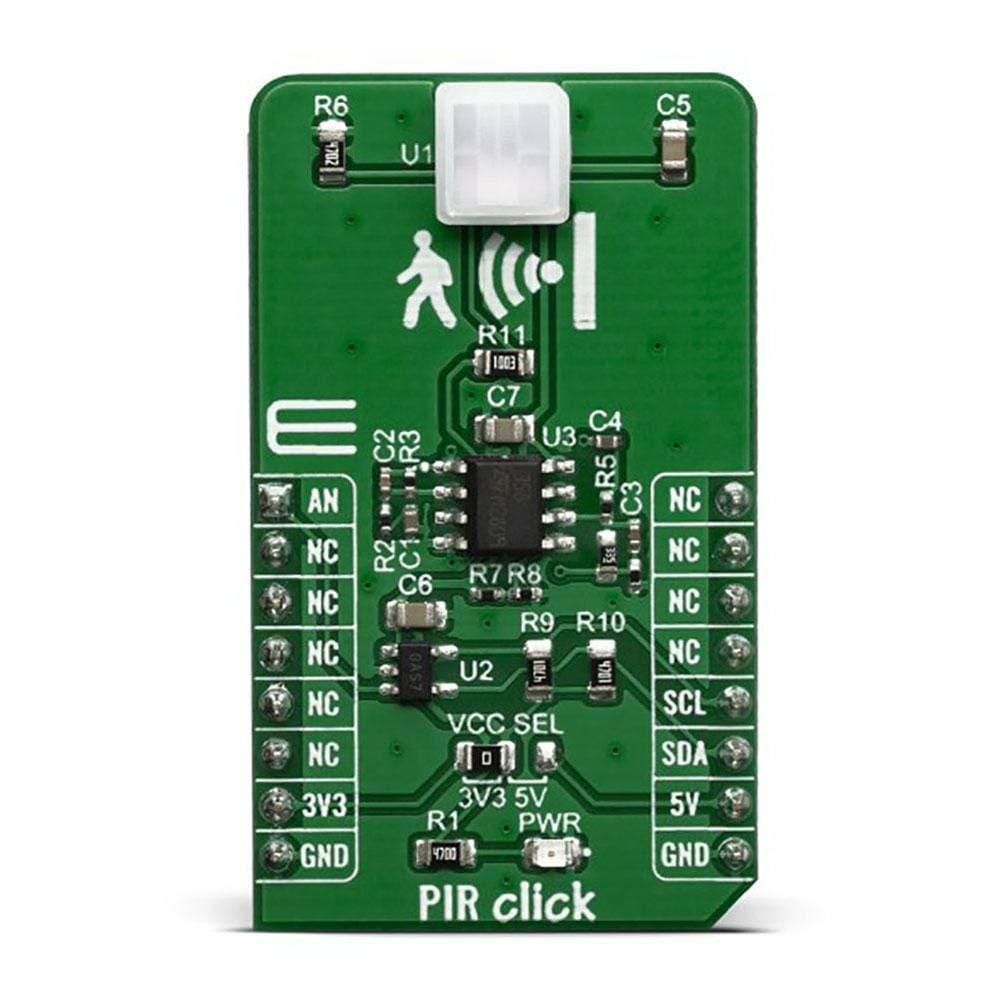
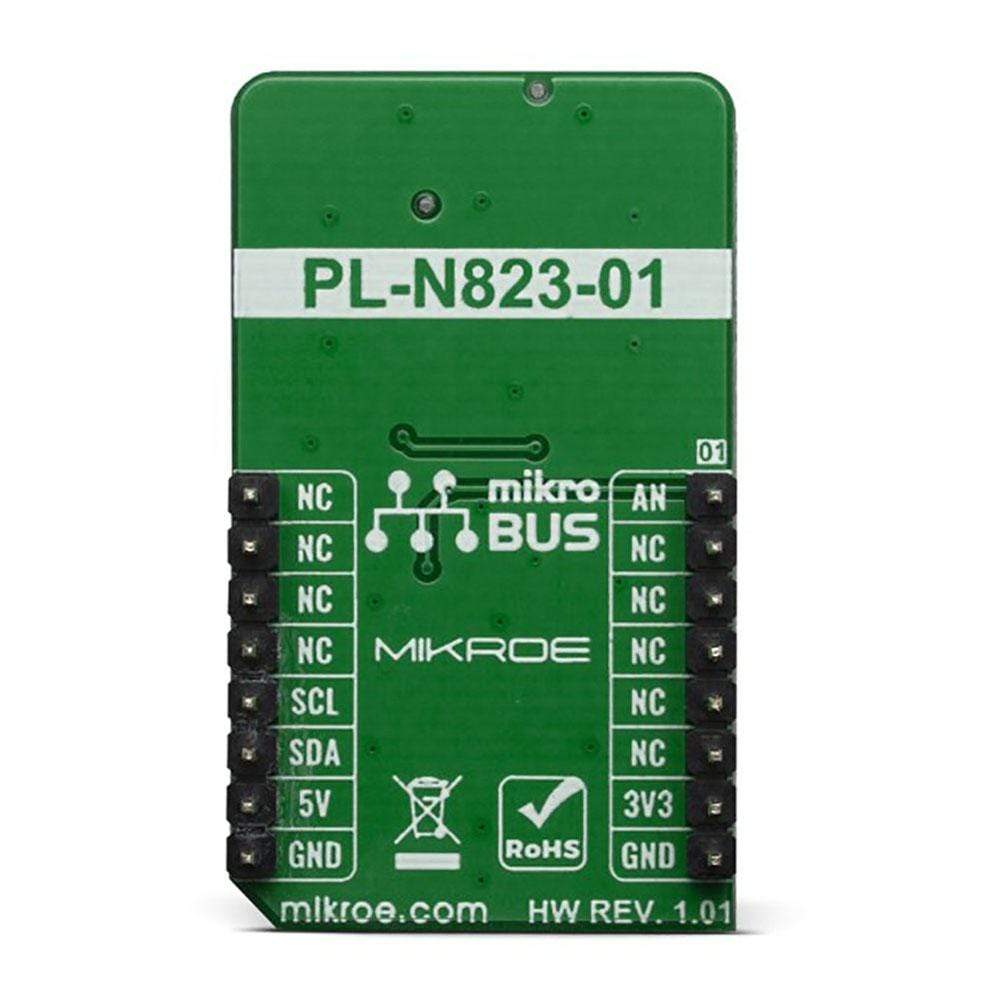
Overview
The PIR Click Board™ is a pyroelectric sensor which generates a voltage when exposed to infrared radiation emitted by live bodies. It is equipped with the PL-N823-01, an infrared sensor from KEMET that uses the pyrolectric effect of ceramic by absorbing infrared rays emitted from the human body, while the the white plastic Fresnel lens covering the sensor filters visible light. This detects the natural infrared signature produced by humans. However, it can also detect infrared rays without using lenses.
Downloads
Das PIR Click Board™ ist ein pyroelektrischer Sensor, der bei Einwirkung von Infrarotstrahlung lebender Körper eine Spannung erzeugt. Er ist mit dem PL-N823-01 ausgestattet, einem Infrarotsensor von KEMET, der den pyroelektrischen Effekt von Keramik nutzt, indem er vom menschlichen Körper abgegebene Infrarotstrahlen absorbiert, während die weiße Fresnellinse aus Kunststoff, die den Sensor bedeckt, sichtbares Licht filtert. Dadurch wird die natürliche Infrarotsignatur des Menschen erkannt. Er kann jedoch auch Infrarotstrahlen ohne Verwendung von Linsen erkennen.
| General Information | |
|---|---|
Part Number (SKU) |
MIKROE-3339
|
Manufacturer |
|
| Physical and Mechanical | |
Weight |
0.019 kg
|
| Other | |
Country of Origin |
|
HS Code Customs Tariff code
|
|
EAN |
8606018714384
|
Warranty |
|
Frequently Asked Questions
Have a Question?
Be the first to ask a question about this.

